Does your chimney need repairs?
Chase Cover
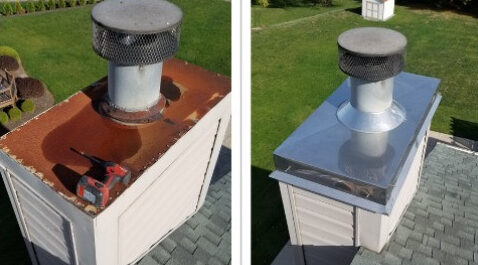
Chase Cover Replacement
Dangers: A deteriorating or rusted chase cover allows water, debris, and pests to enter the chimney system, leading to structural damage, mold, and potential fire hazards. Causes: Prolonged exposure to weather elements, poor material quality, or improper installation. Solutions: We make custom chase covers from 18-gauge steel with X-breaks to efficiently expel water. Our covers feature 4-inch or larger sides, 45-degree drip-edge kickouts to keep water off the chase, a 2.5-inch neck, and all seams and corners are fully welded for maximum durability.
Crown

Crown Repair
Dangers: A cracked or crumbling crown allows water and debris to penetrate the chimney, leading to structural damage, rust, and interior water leaks. Causes: Poor craftsmanship, freeze-thaw cycles, or weathering over time. Solutions: Our process begins with cleaning the surface, priming it with a binder, shaping it with crown mortar, and finishing it with an elastomeric crown seal for long-lasting protection.
Termination Cap & Storm Collar

New Termination Cap & Collar
Dangers: A damaged or missing termination cap and storm collar exposes the chimney to water infiltration, downdrafts, and debris buildup, which can lead to blockages, smoke intrusion, or corrosion. Causes: Harsh weather conditions, rust, normal wear, incorrect installation, incorrect parts, poor-quality materials. Solutions: We replace damaged components with OEM parts or approved replacement parts in accordance with the manufacturer’s specifications, ensuring proper fit and long-lasting performance.
Water Damage
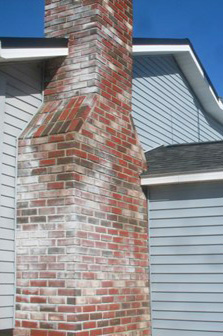
Water Damage Repair & Prevention
Dangers: Water damage weakens the chimney structure, causes mold growth, and accelerates masonry deterioration, leading to costly repairs. Causes: Cracked mortar joints, damaged flashing, or missing caps and covers. Solutions: We offer vegetation removal, pressure washing, and apply a hydrophobic water repellent that prevents water from entering the porous bricks. This service protects the chimney and extends its lifespan. (additionally new chase covers, crown repairs, storm collars, etc.)
Refractory Panels
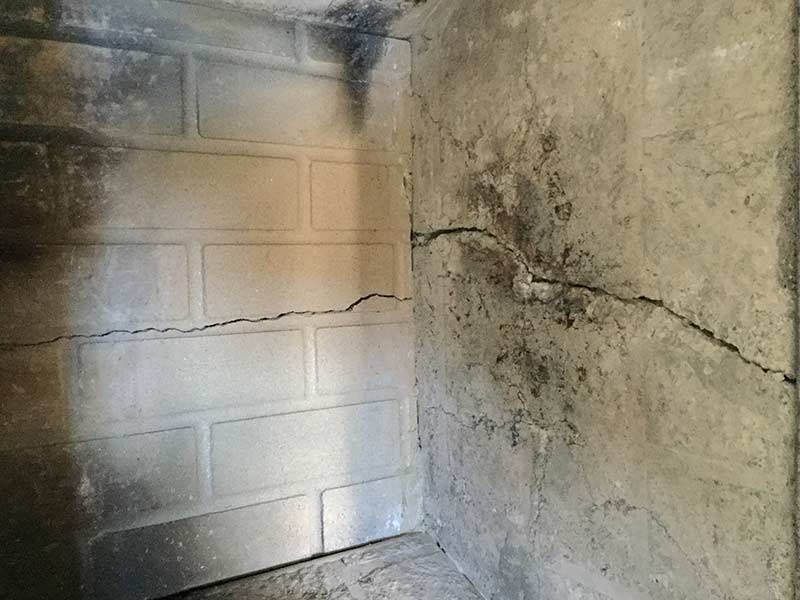
Refractory Panel Replacement & Repair
Dangers: Damaged refractory panels reduce heat protection, potentially causing damage to the fireplace structure and surrounding areas. Causes: Prolonged exposure to high heat, thermal expansion, or physical impact. Solutions: We repair or replace damaged panels and offer the option to install 1/4-inch steel plates over the existing panels for a lifetime solution.
Structural Issues

StructuralRepair, re-pointing, support
Dangers: Cracked, leaning, or crumbling chimneys can collapse, pose fire risks, or allow toxic gases like carbon monoxide to escape into the home. Causes: Settling foundations, seismic activity, water damage, or age-related wear. Solutions: Our services include tuck pointing to restore deteriorating mortar and reinforce chimney stability. As a licensed general contractor, we are equipped to repair or rebuild the chimney as necessary.
Smoke Inside House
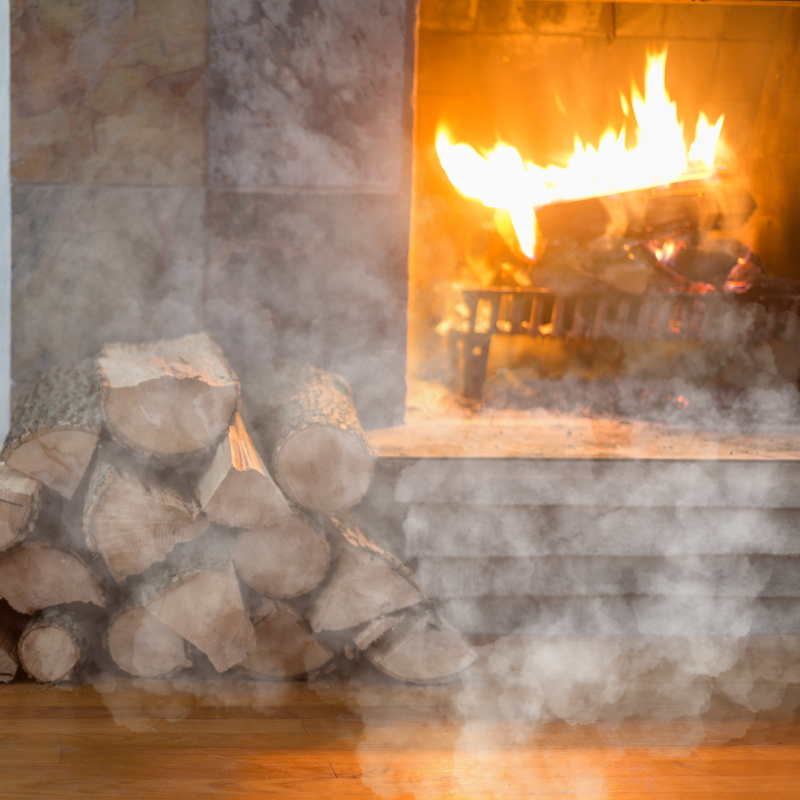
Smoke Infiltration Diagnostic & Repair
Dangers: Smoke entering the home can lead to respiratory issues, unpleasant odors, and a higher risk of carbon monoxide poisoning. Causes: Blocked flue, negative air pressure, improper fireplace or flue design. (many more causes unlisted) Solutions: Smoke intrusion can result from various issues. We address these on a case by case basis but some of the solutions may include extending the chimney, adding silica sand, pre-heating the chimney techniques, new grates, sealing the chimney, testing home for negative pressure, testing draft, smoke screens, smoke baffles, and many more!
Severe Soot Build-up

Major Soot Build Up
Dangers: Excessive soot can cause chimney fires, restrict airflow, and lead to smoke or toxic gas infiltration into the home. This is the #1 cause of chimney fires. Causes: Infrequent cleaning, burning unseasoned wood, or poor chimney draft. Solutions: We provide a deep clean service using specialty brushes, scraping tools, firebox scrubbing, smoke chamber scraping, and our industrial 55-gallon vacuum with a 50-foot hose that cleans from the top of the chimney.
Damper
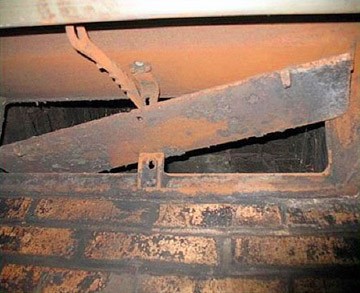
Failing, stuck, inop damper
Dangers: A damaged damper allows drafts, pests, and moisture to enter the home, reducing heating efficiency and potentially causing mold or rust in the chimney. Causes: Corrosion, warping, or debris buildup from regular use or neglect. Solutions: We disassemble the damper, restore it, and remove built-up soot from hard-to-reach areas. In some cases, cleaning out excess debris is enough to fix the damper. If not, we repair or replace the damper with a new OEM or top mounted damper as needed.